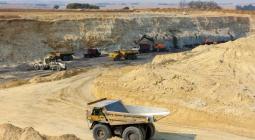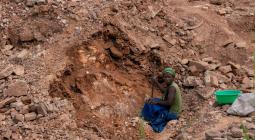World's biggest mining project set to begin in Guinea Republic this year
A $20 billion iron ore, rail, and port development in the Republic of Guinea is expected to commence this year, following a 27-year wait marked by several legal and political setbacks.
Set to be the world’s largest and highest grade new iron ore mine, the project will add around 5% to global seaborne supply when it commences.
Plans to develop the mine began as far back as 1997 when Rio Tinto secured a license to explore the mountain’s Iron ore. Since then, the country has experienced two coups d'état, witnessed four heads of state, and conducted three presidential elections.
In 2024, once Rio Tinto’s state-owned Chinese partners receive the last approval from Beijing, the Anglo-Australian miner intends to fire the starting gun on the most complex project in its history.
Simandou’s mining project
The project is a collaboration involving Rio Tinto, the Guinean government, and at least seven other companies.
Rio Tinto is set to construct the Simfer iron ore mine in collaboration with a consortium led by Chinalco, the world's largest aluminium producer.
Additionally, the WCS iron ore project will be developed by Baowu, the world's largest steel producer, in partnership with a consortium led by Singapore-based Winning International Group.
Both parties will co-finance the construction of a 552km railway and a deepwater port on Guinea’s Atlantic coast, and an additional 70km rail spur to connect its mine with the main line. Rio Tinto Group will spend around $6.2 billion on the development of the project.
Decarbonising the industry
To cut emissions, the industry is exploring alternative approaches, such as direct reduced iron technology in which the ore is treated using hydrogen and carbon monoxide, rather than coke.
Such processes require high-grade iron ore, which is increasingly hard to find in large quantities.
The ore Rio Tinto plans to extract from Simandou has an average iron content of greater than 65 per cent, among the highest in the world.Baatar calls it the “caviar of iron ore”.
Baatar stressed that Simandou has the potential to help decarbonise the Chinese steel industry.
“The only way the steelmaking industry globally decarbonises is if China decarbonises,” he added.
In 2022, China produced 1bn tonnes of steel, representing more than half of global production.
Cover photo: Guinea Iron ore reserve




